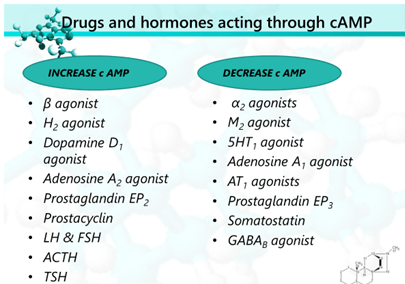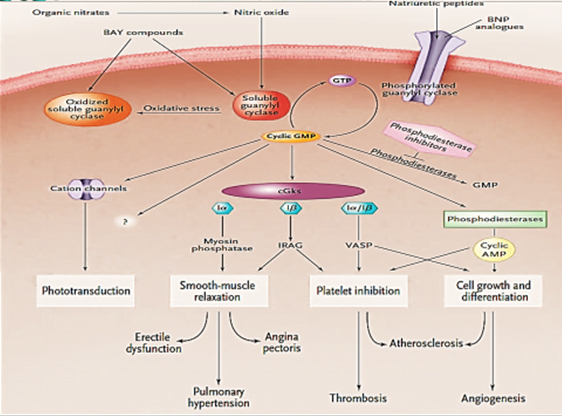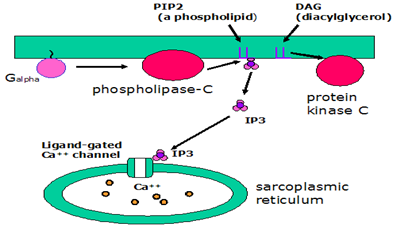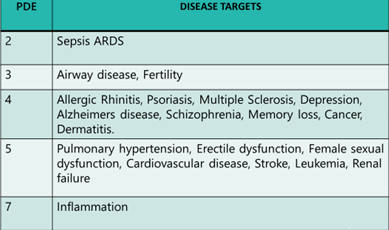Second messenger systems
Signal Transduction
- An effective and well-regulated relay or transduction of extracellular signals is crucial for normal cell behavior.
- This transduction of extracellular signals happens through an agency of primary as well as secondary messengers.
- Aberrant signaling often leads to diverse pathological consequences.
- These signalings offer potential targets for drug therapy.
Why second messengers are needed?
- Hydrophilic messengers cannot cross the cell membrane
- This restriction forces them to produce intracellular second messengers which are responsible for the effects of the various messengers
- Ligand binds to receptors and the resultant ligand-receptor complex is coupled to an enzyme and stimulates the conversion of some metabolite into a second messenger
- This second messenger then mediates all the effects of the primary messenger inside the cell in question
- Second messengers – are molecules that relay signals from receptors on the cell surface to target molecules inside the cell, in the cytoplasm or nucleus.
- Basically, they serve as relay molecules to primary messengers
- In addition, they greatly amplify the strength of the signal
- Targeting the second messenger signaling represent a new and promising approach to therapeutics including cancers.
Types of second messenger molecules
- Hydrophobic molecules: Diacylglycerol (DAG), and Phosphatidylinositol (PI) – membrane associated
- Hydrophilic molecules: cAMP, cGMP, IP3, and Ca2+ à within the cytosol
- Gases: Nitric oxide (NO) and Carbon monoxide (CO) àcan diffuse both through cytosol and across cellular membranes.
G Proteins & GPCRs
- Because of their number and physiological importance, GPCRs are the targets for many drugs; perhaps half of all non-antibiotic prescription drugs act at these receptors
- When a ligand activates the G protein-coupled receptor, it induces a conformational change in the receptor
- allows the receptor to function as a guanine nucleotide exchange factor (GEF) that exchanges GTP in place of GDP on the Gα subunit in the traditional view of heterotrimeric protein activation.
- This exchange triggers the dissociation of the Gα subunit, bound to GTP, from the Gβγ dimer and the receptor.
- The Gα subunit will eventually hydrolyze the attached GTP to GDP by its inherent enzymatic activity, allowing it to re-associate with Gβγ and starting a new cycle.
GPCR mutations in health and disease à
Pseudohypoparathyroidism– type I (PHP 1)
- Caused by mutational inactivation of the α subunit of Gs
- Multiple endocrine abnormalities in cAMP regulated organs
- Short stature, Obesity, Round face, One or more foreshortened metacarpal or metatarsal bones, Subcutaneous calcifications
McCune Albright syndrome
- Somatic mutation in αs in early embryonic development
- Patients mosaic for constitutively active Gs (αs)
- Polyostotic fibrous dysplasia, Precocious puberty
Disruption of G protein signaling-
- Cholera toxin – Modifies Gs so that it cannot be inactivated
- Pertussis toxin – Modifies Gi so that it cannot inhibit adenylyl cyclase

Cyclic GMP and NO signaling pathway

Phosphoinositol pathway

Drugs and Hormones acting through IP3/DAG pathway
- α1 agonist, H 1 agonist, M 1 , M3 agonist
- 5HT2 agonist, AT1 agonist, Bradykinin, Leukotriene agonist, PAF agonist, Vasopressin
- Oxytocin, Thromboxane
PROTEIN KINASE C
- Protein kinase C is a family of ser/thr protein kinases which include molecules whose activities require stimulation by both DAG and Ca2+, by DAG alone, by Ca2+ alone or do not require 2nd messenger stimulation
- Increased levels of PKC associated with malignant transformation in cell lines including
- Breast, lung and gastric carcinomas
- Inhibition of PKC may have an impact on the invasive and metastatic potential of malignant cells.
PHOSPHODIESTERASES
- Cyclic nucleotide phosphodiesterases form another family of important signaling proteins
- Activities are regulated via the rate of gene transcription as well as by second messengers and interactions with other signaling proteins such as arrestin and protein kinases.
- PDEs hydrolyze the cyclic 3′,5′-phosphodiester bond in cAMP and cGMP, thereby terminating their action.
Disease targets for isoenzyme selective PDE inhibitors

Ceramide-The lipid second messenger
- Two major actions of ceramides are
- promotion of cell cycle arrest
- induction of apoptosis.
- mediator of inflammatory responses through arachidonic acid and prostaglandin
Ceramide as a second messenger mediates
- Apoptosis, cell growth, differentiation, senescence,
- Diabetes, insulin resistance,
- Inflammation,
- Neurodegenerative disorders
- Atherosclerosis
- Finding selective inhibitors of the enzymes involved ceramides metabolism as well as agonists and antagonists of these receptors will enhance our knowledge and understanding on how these molecules can control physiological and pathological processes”
Zinc – intracellular second messenger
- structural constituent of a great number of proteins, including enzymes of cellular signaling pathways and transcription factors, and it is essential for their biological activity.
- source of zinc probably one of the intracellular compartment, possibly the ER.
